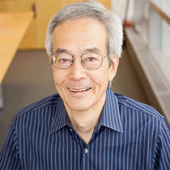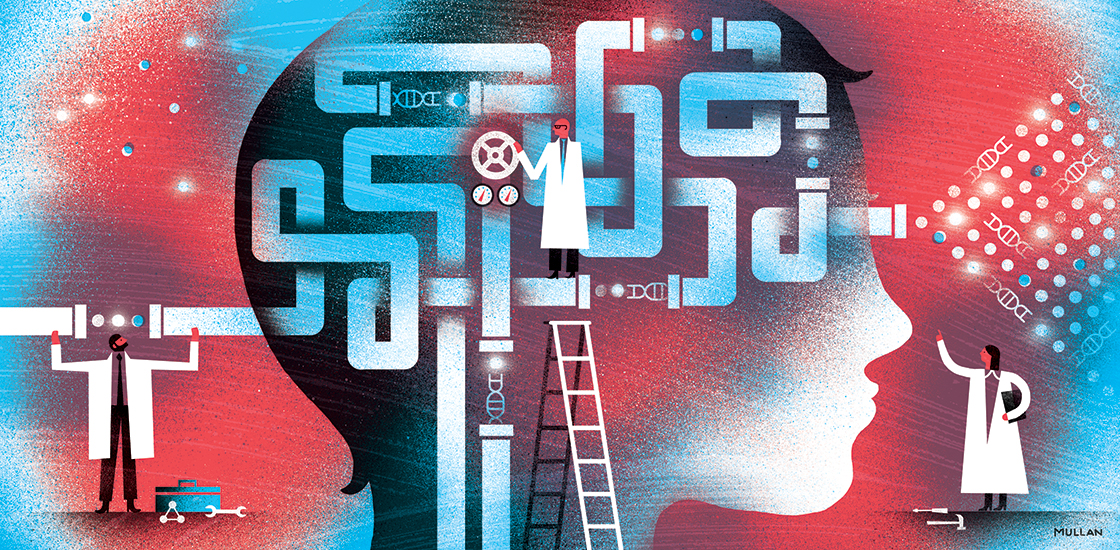THIS ARTICLE IS MORE THAN FIVE YEARS OLD
This article is more than five years old. Autism research — and science in general — is constantly evolving, so older articles may contain information or theories that have been reevaluated since their original publication date.

What causes autism? It depends on whom you ask.
An anatomist might say that brain circuits are wired in unusual ways in people with autism. A scientist who studies synapses, the places where neurons connect, might blame faulty junctions. A geneticist might focus on changes in gene expression, and a physiologist who records neurons’ electrical activity might attribute autism to an imbalance between calming brain signals and excitatory ones.
Richard Tsien, chair of physiology and neuroscience at New York University, says all of these answers are correct. In a review article published 16 March in Neuron, he and his colleagues weave the seemingly disparate views into a unified theory of autism’s underpinnings1.
At the heart of this theory is the idea of feedback loops. These sorts of loops allow systems to tweak their own performance if something is amiss by using their own output to correct their input. We asked Tsien to explain how the new theory combines competing theories of autism into a single feedback-driven system.
Spectrum: What do feedback loops have to do with autism?
Richard Tsien: Feedback loops are part of our daily existence. The economy works through feedback loops, for example — supply influences demand and vice versa. The temperature of a room is measured by a thermostat, and that information leads through wires to regulate the activity of the air conditioning or heating system.
Homeostatic mechanisms in the body, like air conditioning systems, are designed to keep our cells in the ‘sweet spot’ of operation. When something goes wrong — say, if someone throws the window wide open or puts a hot pot right near the thermostat — the system may go out of whack. Many autism genes fit into this type of scheme.
The synapse might be like the ventilation ductwork in our model because it helps produce the outcome of the system. Several autism-linked genes seem to be involved in either making up the synapse or determining how many synapses there are or how strong they are.
Other genes, such as calcium channels, cause autism with a high likelihood when altered at the most elementary level, that of a single amino acid. We could liken these genes to the thermostat, in the sense that we can gauge the activity of cells by the activity of their calcium channels. The more active a cell is, the more often a calcium channel opens and the higher the calcium levels inside. Machinery downstream of calcium channels connects a malfunction or error signal [in calcium channel function] to a change in the expression of genes.
Finally, proteins called transcription factors sit in the nucleus and regulate the expression of genes. Those proteins can also malfunction in autism. In our model, this would be a defect in the air conditioner itself, because these proteins respond to the thermostat and change the overall behavior of the system.
S: How does your model explain autism’s heterogeneity?
RT: Autism has specific features that distinguish it from other neurodevelopmental conditions: altered social behavior, repetitive actions and difficulty in communication. But as you allude to, there’s a lot of variation from one individual to another. Part of the answer may involve the multiple circuits involved in supporting these features. Another factor is that thermostat-controlled systems can go awry in multiple ways, and compensate in various ways. One would expect the wide variation in genetic causes to express itself as a highly heterogeneous disorder. How much feedback adjustments help these individuals cope with various situations may also vary.
S: What does this theory mean for interventions?
RT: A malfunctioning system can go wrong in multiple ways, but it can also be fixed in multiple ways. At autism’s root, there may be a genetic cause. Even in cases where one gene puts the system over the edge, there are other genes that have brought it close to that edge. But the fact that the cause is genetic doesn’t mean that the fix needs to be genetic.
We don’t imagine that it will be practical, within our own lifetimes at least, to go in and change the human genome. It’s more practical to think of a drug that could be administered to direct the system back toward the sweet spot.
To use the air conditioning metaphor, let’s say a room is warmer than it should be. The problem could either be insufficient power to the air conditioner or plugged vents. If the overall goal is to have a consistently cool room, the cure may have nothing to do with the air conditioner itself or the venting system. You could insulate the room so that the air conditioner doesn’t have to work as hard, for instance.
S: What’s the logical next step for researchers?
RT: We would like to see researchers take our hypotheses seriously enough to design experiments that test these ideas. If our theory is right, the cell biologist will find that when a cell is working hard to correct its deviation from the sweet spot, it will produce abnormally high or low levels of messenger RNA and proteins to try to correct the imbalance.
We should be able to use conventional biochemistry to detect this ‘fingerprint’ of a cell frantically trying to bring things back into balance. If we can figure out which of those protein levels or characteristics contributes to the disorder, and correct or circumvent it, we should see behavior revert back to normal.
These ideas aren’t restricted to autism. They could apply to other brain conditions, particularly neuropsychiatric disorders such as schizophrenia, bipolar disorder and major depression. There is tremendous overlap in the genes and mechanisms involved in autism and these other conditions. For example, calcium channels — our examples of thermostat proteins — have been implicated in all four conditions.
Once someone comes up with a practical way to treat the symptoms of one neuropsychiatric condition, the race will be on to apply some of the same know-how to other diseases.

By joining the discussion, you agree to our privacy policy.